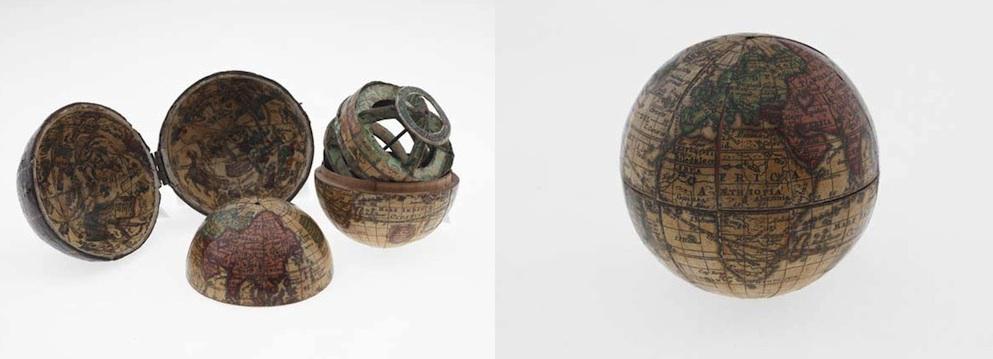The Vault is Slate’s history blog. Like us on Facebook, follow us on Twitter @slatevault, and find us on Tumblr. Find out more about what this space is all about here.
Among the many interesting historical globes photographed for Sylvia Sumira’s Globes: 400 Years of Exploration, Navigation, and Power are a few examples of pocket globes. Here is one made around 1715, by Johann Baptist Homann, a German mapmaker working in Nuremberg. It measures 2 ¾ inches in diameter.
This particular pocket globe came in four pieces that nest inside each other like matryoshka dolls. The outside case, made of leather and featuring an S-shaped hook that secured the two pieces together, is lined with concave representations of a celestial map, showing constellations as seen from the earth. (Celestial globes were among the earliest globes produced, and were once commonly sold alongside their terrestrial cousins.)
Inside, the terrestrial globe (on which California is depicted as an island, a common misconception of the time) is hollow. Split into two parts, it reveals an armillary sphere: a type of skeleton celestial globe that represents the movement of heavenly bodies through circles. This armillary sphere has a band around it that’s illustrated with zodiacal symbols.
Katie Taylor, of the Whipple Museum of the History of Science in the U.K., writes that pocket globes could have served as “status symbols for wealthy gentlemen,” or functioned as educational tools for children. Homann made no other globes, specializing instead in maps and atlases; he might have sold this pocket version as a trinket.
Homann boasted that, as Sumira writes, “recent observations by the Académie Royale des Sciences in Paris were used in the plotting of both globes.” Sadly, even the most accurate pocket globe was probably ineffective for practical navigational purposes.

